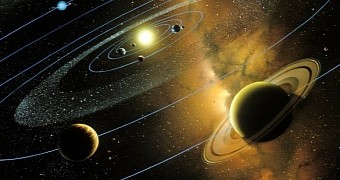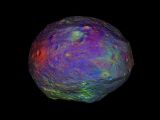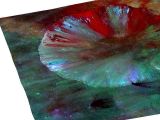A so-called asteroid belt circles our parent star, the Sun, roughly between the orbits of Mars and Jupiter. This asteroid belt is home to dwarf planet Ceres and to myriads of other space boulders, among which Vesta.
Between July 2011 and September 2012, Vesta was orbited and studied by the Dawn probe, launched by NASA in September 2007.
Having compiled and analyzed data beamed back to Earth by NASA's spacecraft, Max Planck Society scientists claim to have reached a better understanding of Vesta's anatomy and history.
The asteroid could have grown to become a planet
The space boulder, located about 60 million kilometers (roughly 37 million miles) closer to the Sun than dwarf planet Ceres, is estimated to measure about 503 kilometers (312.5 miles) across.
Although too small to even stand a chance at being called a dwarf planet, Vesta is nonetheless recognized as the third largest and second heaviest object so far documented in our Solar System's asteroid belt.
What's interesting is that, according to scientists who have taken the time to study it, Vesta could have grown to become not just a dwarf planet, but a proper planet just like Earth and its cosmic neighbors.
At a first glance, Vesta looks just like other asteroids. It has an irregular shape and its surface bears the scars of multiple impacts with other celestial bodies. On the inside, however, the asteroid very much resembles Earth.
In the report presenting their work, astronomers with the Max Planck Society explain that, according to data delivered by NASA's Dawn spacecraft, Vesta has layers.
Specifically, the asteroid is said to have a core, a mantle and a crust. This indicates that, some 4.6 billion years ago, it was basically one big great sphere of molten material.
“The giant asteroid has an onion-like structure similar to Earth’s - comprising an iron-nickel core, rocky mantle and crust. Around 4.6 billion years ago, Vesta must therefore have been a hot, molten body,” specialists say.
Had the asteroid managed to collect more material from its cosmic neighborhood, it could have grown into a planet located in the inner part of the Solar System alongside Mercury, Venus, Earth and Mars.
The fact that its surface is oddly diverse geologically-wise adds support to the theory that this space boulder could have become a proper planet if given the chance.
The space rock still holds some secrets
True, NASA's Dawn spacecraft has revealed a great deal about asteroid Vesta's history and its current anatomy. Still, astronomers stress that the space rock still holds plenty of secrets.
For instance, it is unclear just how thick the crust covering it might be. Proposed figures range from 30 to 80 kilometers (about 18 to 50 miles), but the exact thickness it yet to be revealed.
Besides, it is unclear whether the asteroid might hide frozen water carried to its surface by the celestial bodies that it has collided with over the millennia. Hopefully, future investigations will sort out these mysteries.
Interestingly, scientists say that, since Vesta is basically an orb stuck in an early phase of planet formation, studying it could lead to a better understanding of Earth's formation and evolution.

 14 DAY TRIAL //
14 DAY TRIAL // 


